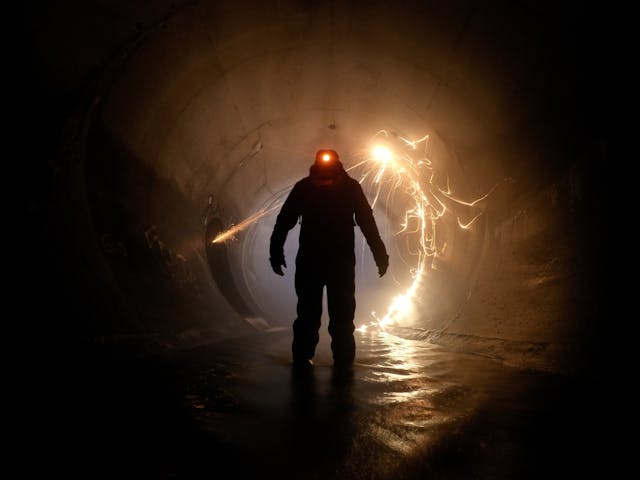Imagine if half the people in your neighborhood, your city, or even your whole country were wiped out. It might sound like something out of an apocalyptic horror film, but it actually happened in the 14th century during a disease outbreak known as black death.
In 2020 many countries throughout the world was experiencing the worst flu season in many years. It’s also been a global concern with countries all over Asia and Europe. This pandemic which we recently experienced in 2020 – 21 has killed almost 1 million people all over the world. We might regard ourselves as fortunate though based on what you’re about to learn in this article which is about the black death.
In this article you will learn how exactly black death started, its history and the weird cures tried during the pandemic.
HISTORY

In October of 1347, 12 Genoese trading ships dropped anchor at a Sicilian port of Messina. Those who eagerly approached the ship were faced with a nasty sight. Almost all occupants of the ships were either dead or barely alive, their skin erupting with blackened boils that dripped and oozing with blood.
In horror the Sicilian authorities demanded that all the death ships should be out of the harbor. But though the ships left, the damage had already been done. Spreading from China through Asia, the middle east and Europe. The black death was now everywhere.
One of the most fascinating and puzzling things about the black death is that the illness itself was not a new phenomenon but one that has affected humans for centuries. Three major plague pandemics have occurred in human history. And while they occurred centuries apart, they shared similar traits that paved the way for the spread of disease. So, let’s go back in history,
THE PLAGUE OF JUSTINIAN
The Plague of Justinian infected the Byzantine Empire around 541 CE and is considered one of the first recorded pandemics. It’s not entirely clear how it got here from its origins in central Asia. While many suspected the Plague of Justinian originated in China or India and was then spread through sea trading routes, the particular virus or disease that caused the pandemic was never identified.
At its peak, this plague killed roughly 10,000 people a day and ultimately took the lives of roughly 50 million people around the world. It lasted 225 years before it finally disappeared. The plague had finally quiet down again and remained relatively dormant after the mid-8th century until 700 years later it exploded onto the world scene once again with even more fury and death than it had ever done before, in 1347 The black death.
THE BUBONIC PLAGUE/ THE BLACK DEATH.

Black Death is the colloquial name for the bubonic plague, which ravaged Europe’s population. Black death also known as plague has been the worst pandemic the world has ever seen in terms of loss of life. Killing somewhere between 75 – 200 million people in Europe and Asia in just a few years from 1346 – 1353. Remember that the entire world population prior to the pandemic was only 475 million people that means that it’s possible that around 42% of the entire human population of the world died within just a few years from a single disease.
THIRD PLAGUE PANDEMIC
The third pandemic was an outbreak of the bubonic plague that originated in China. The plague appeared in the Yunnan province of China and quickly spread across the Qing empire to the British outpost of Hong Kong, where it was transmitted aboard through ships to the British colonies in India. There it wreaked immense havoc and lasted from 1855 – 1950s.
Yes, this outbreak actually lasted almost 100 full years. The pandemic slowly spread beyond Asia to other continents and is believed to ultimately have taken the lives of as many a 15 million people. Mostly in India and China but it was relatively mild everywhere else in the World. It wasn’t until 1898 that Paul-Louis Simond discovered the cause of the disease. After this discovery, the first time a scientist had conclusively demonstrated what caused the plague, helped cure the spread of the sickness and eventually led to the creation of a vaccine.
Various forms of the plague continued to spring up and become a recurring threat for the next century or so. Each time it reappeared, it claimed even more lives.
WEIRD CURES TRIED DURING PLAGUE
Doctors began to get desperate and creative with so-called plague cures. The way the black death was treated, failed to help and may have actually helped kill victims or spread it further unintentionally. So, these are some of those cures –
1. BLOODLETTING
Bloodletting was common during the Middle Ages as it was believed that it expelled harmful humors(blood) from within the body which were causing this sickness. The practice of bloodletting involved leaching or cutting near to the site of the infection, in this case the Bubo. However, cutting into the skin to drain the blood often led to further infection as the immune system was already weakened and health conditions were Unsanitary. Unfortunately, the procedure appeared to be as ineffective for the victims of the plague
2. SWEATING

Sweating was also a popular cure. In this case the doctor would provide the patient with medicine that would raise their temperature. The idea was to make the patient’s sweat out the corruption from the blood that the disease caused, it was seen as a last resort treatment.
3. TREACLE

One of the more pleasant ways of curing the plague was to use treacle, a type of syrup made of unrefined sugar. The catch was that the treacle had to be aged for at least 10 years to be an effective cure for the black death. The reasoning behind this cure was that the substance which by that point would be horrific smelling and very sticky was going to rid the body of the disease while simultaneously counteracting the effects of the disease.
The treacle was drunk in its thick syrupy form and was thought to completely rid the plague from the victim’s body. While seemingly improbable it is possible that over the course of the 10-year aging period that disease fighting molds may have developed within the treacle that could help fight off the plague, whether this saved anyone is largely unknown.
4. DINNER PARTIES

Some doctors thought that stress made people more susceptible to the plague. So, they recommended eating their meals with others in order to promote merrymaking and reduce stress. In Florence Markey only the COPO Stefani describes how people used to take turns to host the dinners although often two or three people wouldn’t turn up. This cure helped to spread the plague more because of close contact with the Infected.
5. CRUSHED EMERALDS

Crushed Emeralds unsurprisingly this cure was more for the wealthy plague sufferer. The idea was that swallowing the precious stones would help to restore balance amongst the humors and therefore cure the victim. Emeralds weren’t the only precious jewels used, other minerals such as pearls were said to be effective. The stones were usually ground down and mixed with water to form a sparkly potation one that was laced with little bits of emerald that probably felt like broken glass.
6. HUMAN FECES
Doctors would make a paste from human feces, flower roots and some tree resins. The buboes would then be cut open and the paste would be smeared on the open wound, then be tightly wrapped to keep the paste inside.
7. SEWER (DRAIN)

Living in a sewer this is a very counterproductive cure however medieval doctors thought that the plague was caused by the air. It was thought that the disgusting smells of the sewer would stop the less smelly disease in the air from coming near them and therefore not infecting them. Sadly, not only was it a disgusting cure but it also wasn’t very effective, as it often exposed victims to a variety of other nasty diseases.
8. WHIPPING YOURSELF

The Middle Ages was particularly a religious time and it’s no wonder that people turned to God when they got the disease. They thought that it might be God’s punishment for being sinful and that the only way to a cure was to punish themselves. They did this through flagellation, this was where they went into the streets and whipped themselves and each other to punish themselves for their sins in the hope that God would cure them.
9.URINE
Bathe in urine while we might find this a disgusting cure by today’s clean standards, this isn’t altogether unsurprising. Urine was believed to have healing properties and had been associated with medical issues. Since the days of Galen and Hippocrates urine was often examined in flasks by physicians who matched the color and consistency to illustrations. Victims of the plague were given urine to bathe and with the thought being that it would relieve their symptoms. This was then taken further and some victims were given urine to drink
10. LIVE CHICKEN CURE
This may be the most puzzling of the plague cures. During the medieval period into the 13th century, a popular cure was the live chicken cure or the Vickery method. The live chicken treatment included taking a rooster plucking its backside and placing its rump on to the buboes of the plague victim. Supposedly the bare chicken would draw out the poison in the buboes therefore curing the plague victim of the terrible disease. The live chicken treatment was so popular throughout Europe that it was integrated into normal medical procedures for the plague victims. By the 16th century some physicians believed that the heat from the chicken was what drew the poison from the buboes while others simply believed the chicken balanced the humors within the body.
11. QUARANTINE
The most tried and beneficial of the cures was the use of quarantine. Quarantine begun to be implemented in Italy in 1348. Quarantine policies required that individuals, even entire families be confined to or shut up in their homes until they had recovered from the plague and then be confined for a further 40 days afterwards. For many that recovery never happened, bodies littered the streets in front of the isolated houses. If a family member died in quarantine, they would be left on the doorstep to be taken away to the plague pits. While plague quarantine policies did work in some ways, the death toll in London was still high at around ten thousand four hundred people, 7.5 percent of the city’s population in 1636.
FINAL THOUGHTS
Of course, these cures were not very successful, after failure upon failure and in an attempt at self-preservation many doctors simply stopped accepting patients even priests began refusing to perform last rites out of danger for their own safety. Eventually the Black Death just went away later. The next few centuries as time went on and medicine became more refined, doctors began to understand what remedies worked and why sanitation and quarantine became more and more important as cures while others such as flagellation became less prominent.
You might wonder why these cures were ever tried and if people really believed them to work, the answer is yes physicians and patients really believed that these cures were the right thing to do in stopping the plague. It is likely that the cures became widespread because someone tried them and it appeared to work, word would spread and more people would try them, that means there were probably more crazy cures that were out there that we don’t know about.

In 1894, scientists discovered the bacteria behind the plague outbreaks. Their discovery helped further developments in microbiology, medicine, urban planning, and sanitation methods, which led to the treatment and prevention of the disease. Economic expansion, urbanization, and a lack of medical knowledge contributed to the disastrous spread of plague. In turn, however, the disease helped catapult crucial advancements in science and public health, very well making plague pandemics a thing of the past.
Just like Plague every year millions of people die of AIDS. AIDS is one of the worst pandemics in modern history. If you are interested in these kind of articles then do checkout the website medicoved.com.
Author : Dr. Easminara shaikh

